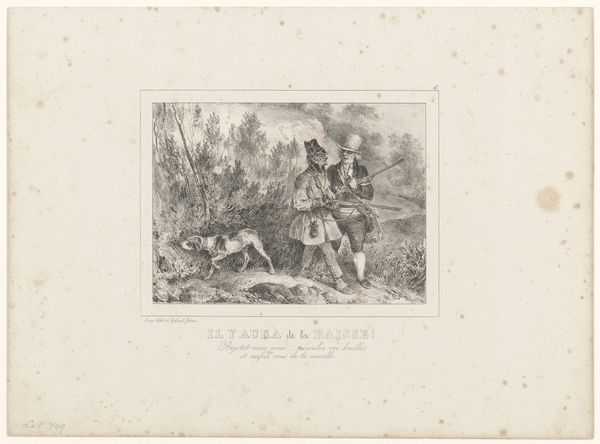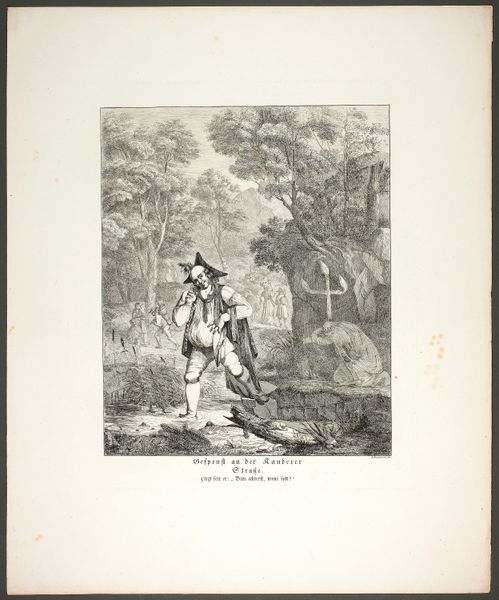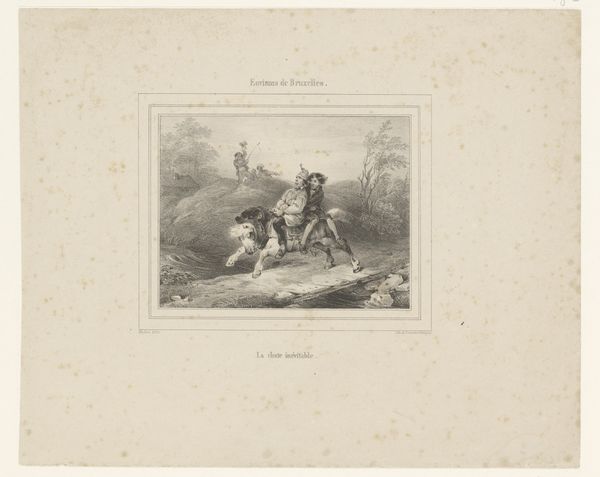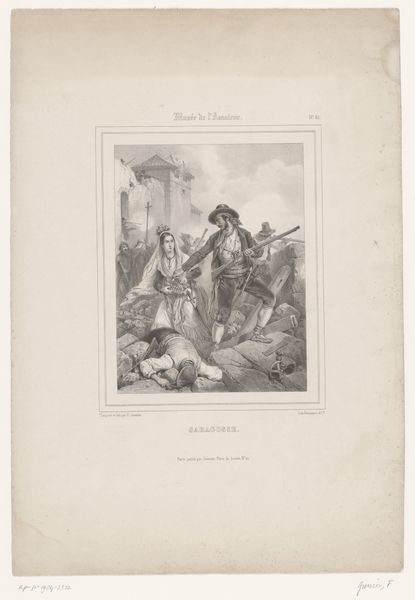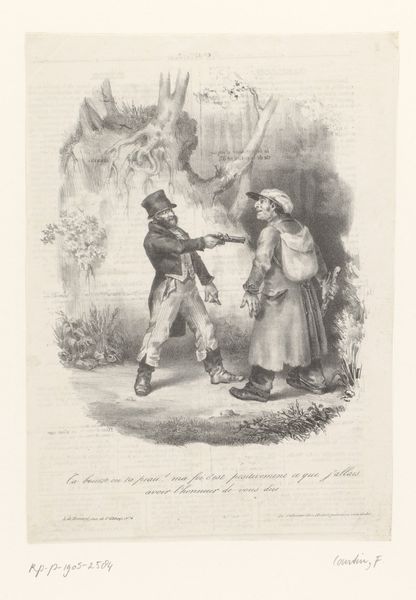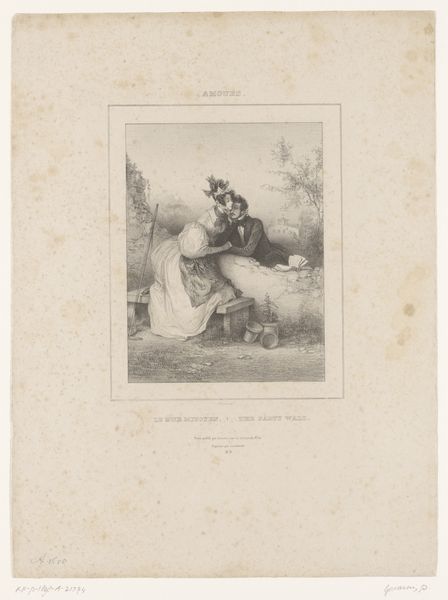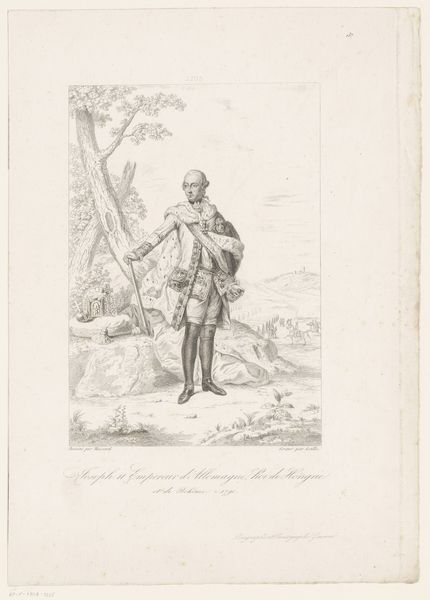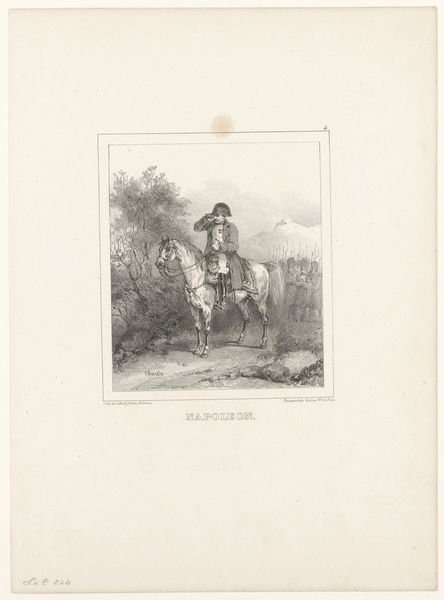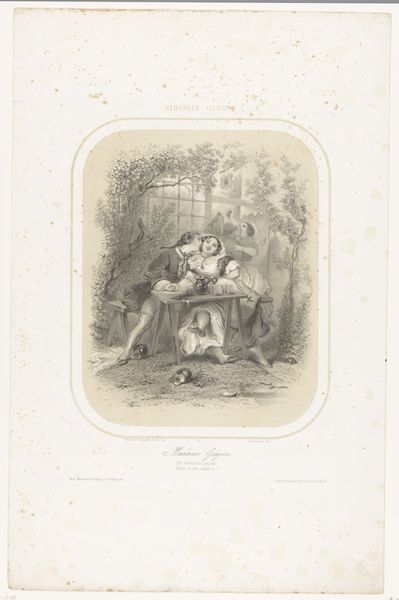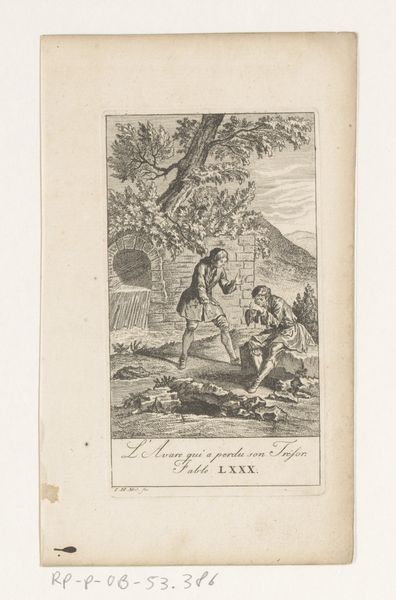
Druivenplukker ondersteunt een dronken soldaat in de wijngaard 1832
0:00
0:00
nicolastoussaintcharlet
Rijksmuseum
print, etching
#
portrait
#
pencil drawn
# print
#
etching
#
caricature
#
pencil sketch
#
old engraving style
#
figuration
#
romanticism
#
history-painting
Dimensions: height 338 mm, width 246 mm
Copyright: Rijks Museum: Open Domain
Editor: This is Nicolas Toussaint Charlet’s 1832 print, "Druivenplukker ondersteunt een dronken soldaat in de wijngaard," at the Rijksmuseum. The etching depicts a tipsy soldier being helped by a grape picker. It's interesting how Charlet used line work to create such a defined portrayal, almost satirical. How do you interpret the symbolism at play here? Curator: It's fascinating how Charlet uses these two figures, the grape picker and the drunken soldier, to explore ideas about labor, conflict, and social responsibility. Notice the way the grape picker’s form is slightly stooped, suggesting weariness but also groundedness. What associations do you make with the grape harvest? Editor: Hmm, harvest brings ideas of abundance and reward, a sense of completion of labor. Curator: Exactly! The drunken soldier disrupts this, embodying disorder and perhaps the spoils of war taken to excess. Does the contrast remind you of any broader social themes? Editor: Perhaps a critique of military culture at the time? Curator: Potentially. Look closer— the print medium itself plays a part, allowing Charlet to disseminate his commentary widely, embedding a critical visual message into the collective consciousness. Editor: It's striking how such delicate lines can hold such a potent narrative. I initially saw just a funny scene. Now, the artist’s calculated message rings much more profoundly. Curator: The symbols embedded in the composition reveal how art serves not just as reflection but a historical record imbued with cultural critique and social memory. This changes our viewing experience.
Comments
No comments
Be the first to comment and join the conversation on the ultimate creative platform.
